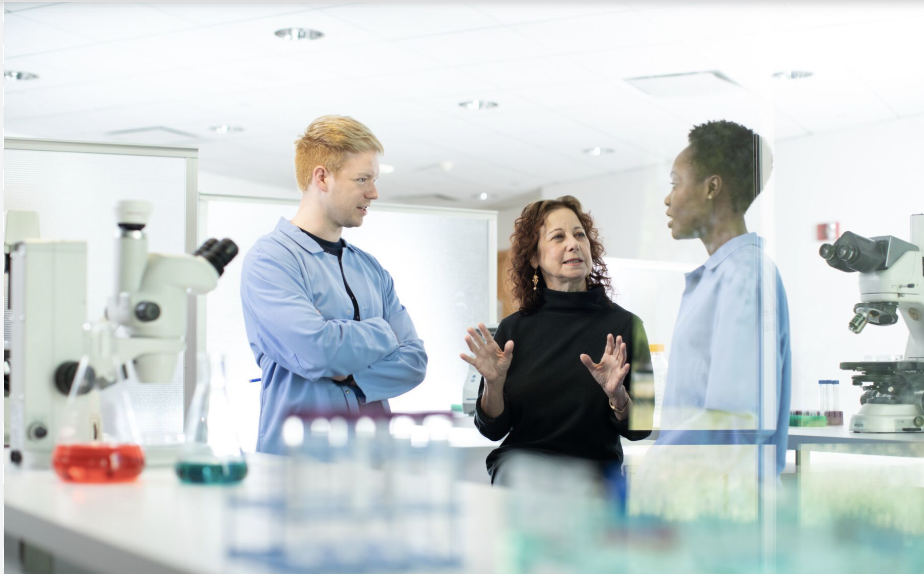Indian Wells IronMan 70.3
About me: Corey Webster, PhD
I completed my Postdoctoral Studies in the lab of Judy Campisi at the Buck Institute for Research on Aging. She was my hero and the ‘Queen of Cellular Senescence.’ Much of what we understand about aging biology came from Judy Campisi: how cells collect DNA damage and toxic factors over time and convert those messages into a cell type—senescence, which we now understand is responsible for processes such as rate of aging and onset of age related disease.
In the Campisi lab, I built tools to better understand senescence at the level of specific cell types. The ensemble of tools that I generated ranged from a new mouse model for cell type selective identification and elimination of senescent cells. I also generated new genome editing tools using directed evolution for the purpose of integrating large constructs into the genome. These included chemogenetic control of nuclear localization to limit off-target effects and actuators for remote control of mitochondrial dynamics. I’m in my element when I’m making things. I have a deep passion for synthetic biology and the feeling of developing a tool that others can use to gain insight into biological processes.
Early in my career, I was extremely fortunate to have been an RA in the lab of Ellen Lumpkin. Because Ellen was a Sandler fellow, we were an unofficial members of the lab of David Julius. During one of the Julius lab meetings, I saw some of the most inspiring data I have ever seen: Sharon Haynes, a graduate student presented her hard earned 2-photon imaging movies of microglia, in a live mouse brain, swarming around a laser ablation injury or a pipette full of ATP. I knew I had to work on that! For my Master’s thesis, I showed that the same receptor in microglia, P2RY12 governs microglia inflammasome activation, migration to the hippocampus following a global cerebral ischemia injury, and knocking it down or blocking it with the FDA approved drug, clopidogrel, is neuroprotective to neurons in the hippocampus in the context of GCI (Webster et al., 2013). The Julius lab became the inspiration for many of my best ideas in science.
When serendipity meets hard work. As a graduate student in MCB at Berkeley, I was doing 2-P imaging experiments on glial cells in the retina, when I noticed a lot of signaling when I would crank up the laser power. After some calculations, I realized that the laser power was likely increasing the temperature by a few degrees celsius, so I knew I was likely looking at a transient receptor potential channel. The other serendipitous part of the story is that it happens to be the receptor for the chief steroid hormone, which gets converted to all other steroid hormones, placing at the center of a massive node for thousands of biological processes in the cell. For my thesis, I showed that this steroid and ion channel combination create an environment during development in which brain circuits are much more likely to wire up together. Behavioral data demonstrate the importance of this Trp channel for normal brain development.
Can we use this novel pathway to prevent or stop neurodegeneration? It turns out that as we age, levels of the chief steroid hormone decrease, while simultaneously, levels of another hormone that also has dramatic effects on aging and disease increases, cortisol. Based on our findings (Webster et al., 2020), when the chief hormone level decreases, or when cortisol increases, we expect that so too does synaptic plasticity, the capacity to form new memories, and cognitive performance decline. All of this is occuring during aging, creating a brain environment that is highly vulnerable to neurodegeneration, but we believe we can positively intervene with a new class of therapeutics for aging related disease and neurodegeneration.
The data that changed my life from Sharon Haynes and David Julius (2006). Left is WT microglia swarming to laser ablation injury. Right is P2RY12-/-.
The chief steroid hormone induces massive signaling in glial cells in the retina. This is important for synapse formation.
In memory of our fearless mentor, Judy Campisi
Contact us
Interested in working together? Fill out some info and we will be in touch shortly. We can’t wait to hear from you!


